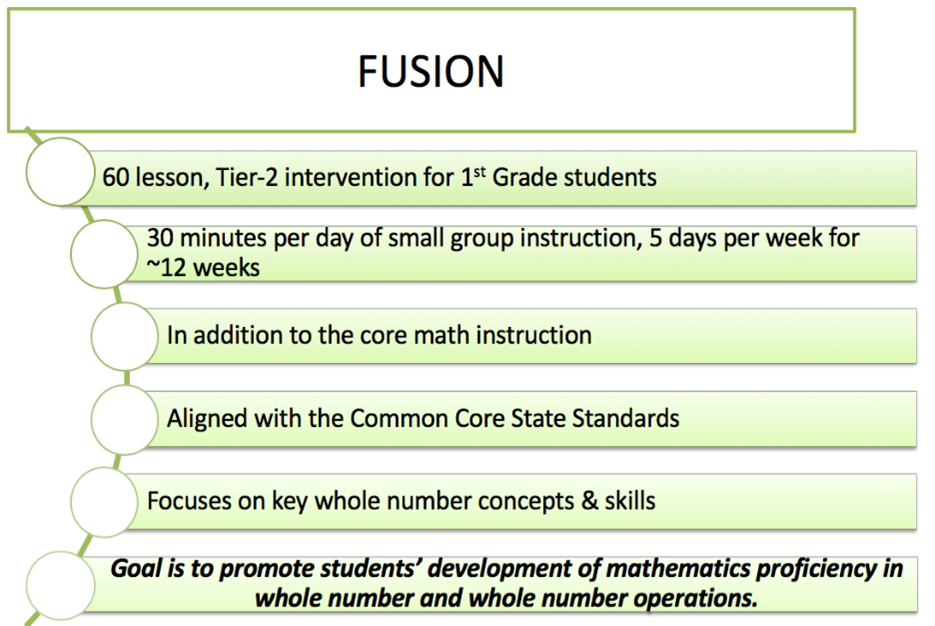Examining the Impact of a First Grade Whole Number Intervention by Group Size
Ben Clarke, Christian Doabler, Marah Sutherland, Derek Kosty, Jessica Turtura, and Keith Smolkowski
The importance of early mathematics
The importance of a successful start to learning mathematics has been a national priority for several decades. Mounting evidence indicates that trajectories of mathematics performance are established early and remain relatively stable across time. This may in part be due to substantial disparities in young students’ access to early mathematics experiences and instruction with preschool-aged students from upper- and middle-class backgrounds already outperforming their economically disadvantaged peers.
The Fusion intervention
To address this issue researchers have developed and evaluated interventions focused on developing whole number understanding. Our research team developed and evaluated Fusion, a first grade math intervention.

How did we do this study and what did we find
The study used a randomized control trial (RCT) to investigate the Fusion intervention in 53 first grade classrooms with approximately 10 eligible students per classroom. The research team randomly assigned these 10 students to one of three conditions: (1) a Fusion larger small group (5:1 student-teacher ratio), (2) a Fusion smaller small group (2:1 student-teacher ratio), and (3) a no-intervention control group.
Two primary research questions were investigated as part of this study: (1) What was the overall impact of the Fusion intervention on students’ math performance? and (2) Was there a differential impact on student outcomes between the two intervention conditions?
The Fusion groups outperformed the control group on four first-grade math outcome measures (with statistically significant results for two outcomes). The Fusion 2:1 group outperformed the Fusion 5:1 group on all four outcome measures (with two of the differences statistically significant). On a second-grade math measure no difference was found between Fusion groups and control, but the 2:1 Fusion group outperformed the Fusion 5:1 group on this measure.
Implications
Schools implementing multi-tier systems of support in mathematics should consider how best to structure student groups. Group structure may influence the effectiveness of an intervention. Given that other studies of group size have indicated a range of findings, a continued focus on elements of intervention delivery should remain a focus of the research community.
Full Article Citation:
Clarke, B. Doabler, C.T., Sutherland, M., Kosty, D., Turtura, J., and Smolkowski, K. (2022). Examining the Impact of a First Grade Whole Number Intervention by Group Size. Journal of Research on Educational Effectiveness. DOI: https://doi.org/10.1080/19345747.2022.2093299.
